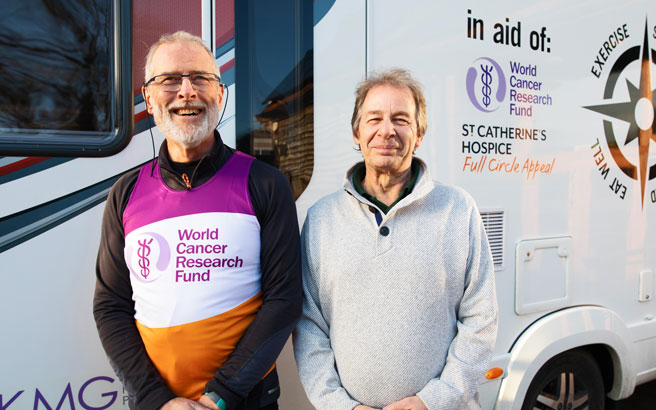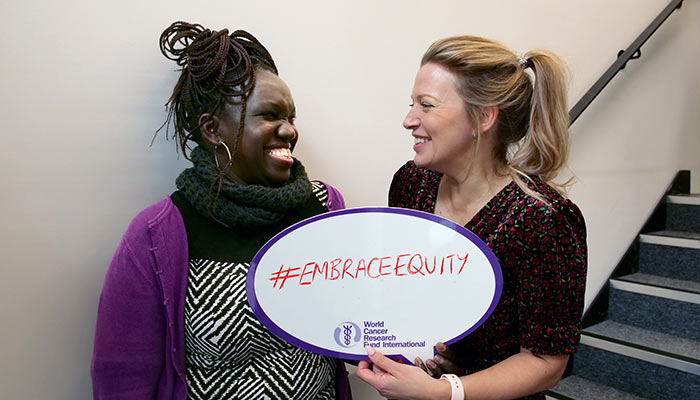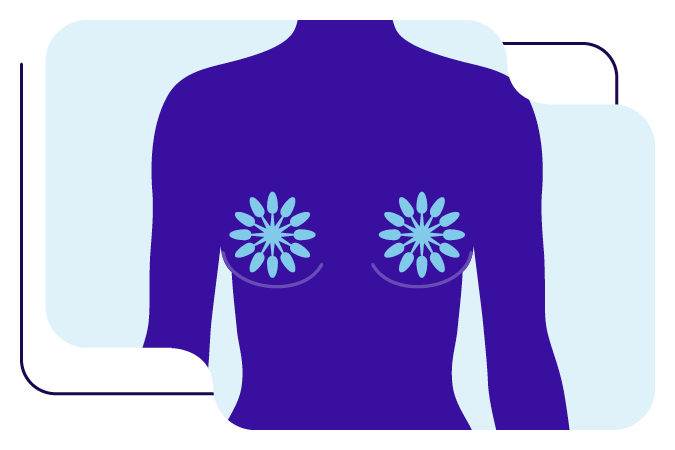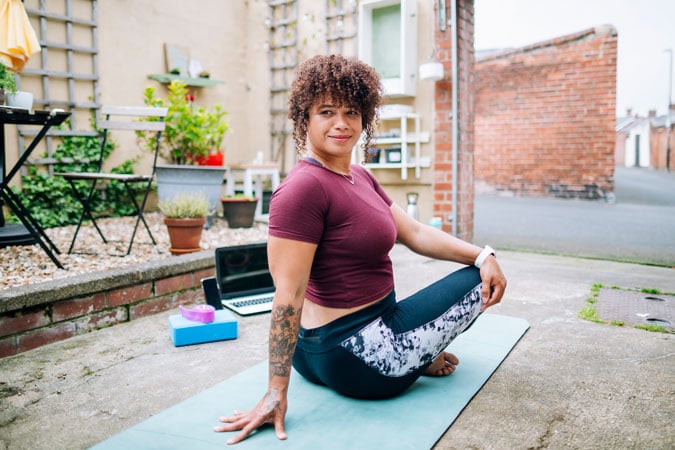A bowel cancer diagnosis during lockdown shocked our supporter Claire Burlison to the core. But following surgery, she’s now living beyond cancer and trying to follow our Recommendations.
A cancer diagnosis can be devastating for anyone. But when you’re young, energetic – and the world is in the grip of a global pandemic – it’s even harder.
“I was diagnosed with bowel cancer in 2020,” says Claire, “which came as a shock as I’m only in my 40s. Before that, I assumed my irritable bowel syndrome was just getting worse. It was only when I got sharp stomach pains and ended up in A&E that I found out I needed surgery.
“I was expecting bad news, but it still knocked me for six when they phoned and told me I had bowel cancer,” she adds.
Although bowel cancer – like most cancers – is more prevalent in older adults, it’s sadly increasingly common in younger people. Researchers are trying to find out why. Fortunately for Claire, doctors found that the cancer hadn’t spread. Now, having been cancer-free for over 2 years, she’s trying to follow our Recommendations in her daily life to reduce the risk of cancer returning.
Conscious eating
Claire limits alcohol and is much more aware of what she eats – checking food labels to see what’s really in the food she’s buying, and dramatically reducing how much red and processed meat she eats, because of the strong links to bowel cancer.
Exercise is also important for people living beyond cancer – with both physical and mental benefits. For Claire, staying active comes naturally as she is the founder of the international dance phenomenon Clubbercise. Blending simple but effective dance, toning and combat moves, Clubbercise is a workout with a difference aimed at all abilities. The atmosphere is more nightclub than gym, as people dance together in a darkened room with low lighting and flashing LED glow sticks.
Know the symptoms of bowel cancer
Claire says she’s “proud to still be here supporting Bowel Cancer Awareness Month”, which takes place in April every year.
“Thankfully, my cancer was caught early and I’m fine now but many people aren’t so lucky. I’ve lost friends to this terrible disease and I’m keen to raise awareness to help others. If you notice any changes to your bowel habits that last more than a couple of weeks please see your doctor straight away – it could save your life!”
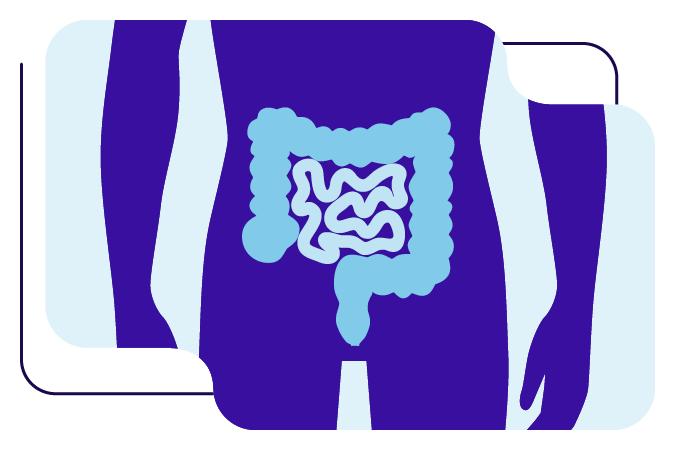
Get the lowdown on bowel cancer
What does our research say about how you can prevent the disease?

Eggs-ellent ideas for families
Have fun and stay healthy with Easter-themed activities for kids of all ages
Breast cancer is now the most common cancer in the world. We asked our researcher to explain how physical activity plays a key role in reducing breast cancer risk.
Evidence suggests that inactivity and sitting down too much increase a woman’s risk of breast cancer, and that exercise after a breast cancer diagnosis lowers a woman’s risk of dying from cancer. How close are we to knowing how strong these links are?
Brigid Lynch: I think we are now at a point where we can say that physical inactivity causes breast cancer. The evidence is consistent and robust, and we can triangulate evidence from:
- observational studies
- Mendelian randomisation [a research method that uses genetic variants associated with risk factors of interest to examine causal effects]
- systematic reviews [a structured analysis of all the literature on a particular topic]
The evidence isn’t as clear for sedentary behaviour, as there are far fewer studies on this topic.
There is also less robust evidence for exercise after a breast cancer diagnosis. The research on this topic comes from observational studies, which are subject to considerable selection bias [arising from errors in choosing the individuals or groups to take part in a study], measurement error, and reverse causation [attributing a cause from a consequence]. So we need additional, carefully-designed studies on these latter two topics.
> More on physical activity and breast cancer survivors
What’s going on in a woman’s body when she does or doesn’t exercise? It may seem strange that exercise, which we assume is to do with muscle/bone/respiratory/cardiological health, can have such an impact on a small group of cells in a woman’s breast.
BL: We recently concluded a study funded by Wereld Kanker Onderzoek Fonds [the Dutch part of the World Cancer Research Fund International network]. In this project we systematically reviewed and meta-analysed the mechanistic [biological] evidence linking physical inactivity to breast cancer risk, focusing on 3 potential biological pathways:
- sex steroid hormones
- insulin/insulin-like growth factor (IGF) signalling [IGF is a protein that can promote cell division and inhibit cell death, which can lead to tumour development]
- inflammation
We found clear evidence that sex steroid hormones increase the risk of breast cancer, and that physical activity reduces the circulating levels of sex steroid hormones.
Although physical activity had an effect on insulin/IGF signalling and inflammation, there was minimal evidence that these pathways played a role in breast cancer risk. We weren’t able to rule out insulin/IGF signalling and inflammation as being important because there were not many high-quality, low risk of bias studies on these topics.
In summary, there is a clear biological pathway from physical activity to reduced breast cancer risk via sex hormones, particularly oestrogens and androgens. And as physical activity is important for so much more than cancer prevention, it’s critical to build this into your everyday routine!
When we talk about physical activity, are we talking about running and going to the gym? Or is it simply sitting down less?
BL: The studies that have focused on physical activity are nearly all talking about moderate to vigorous intensity activity, so this means activities that raise your heart rate and make it harder to talk while exercising. Moderate physical activity could be a brisk walk or a bike ride to the shops; vigorous physical activity uses higher levels of energy and includes running, fast swimming and aerobics.
We know that many girls exercise less in their teenage years. In light of your research on the connections between breast cancer and activity, how concerning is this?
BL: We know that people who maintain their exercise levels through childhood and adolescence into adulthood are more likely to remain active. It’s concerning that so many girls reduce their physical activity during teenage years, but there are many good programmes that are aimed to help reverse this trend.
After speaking to Prof Lynch, we asked Dr Ioana Vlad from World Cancer Research Fund International’s Policy and Public Affairs team to share examples of countries encouraging women and girls to exercise more.
- Every Body Active is a lottery-funded programme in Northern Ireland that aims to increase participation in sport among traditionally underrepresented groups, including women and girls aged 14–25.
- Universo Mujer II is a project in Spain that aims to promote and increase female participation in all areas of sport.
- Tuttingoal is a scheme by the Italian Football Federation, in collaboration with the Ministry of Education, University and Research, to encourage participation in football by school-age children, with children setting themselves up as sports clubs and building teams of 5 boys and 5 girls.
- Terre de Jeux 2024 aims put more sport in the daily life of inhabitants in France and its oversea territories.
These examples are from our MOVING database of global policies designed to promote physical activity.
More on breast cancer
Our Director of Research and Innovation, Dr Panagiota Mitrou, has been cited across the news media recently after the publication of a study, co-funded by World Cancer Research Fund, linking ultra-processed food (UPF) – which we all eat – to cancer.
The observational study – a collaboration between Imperial College London, the International Agency for Research on Cancer (IARC), Universidade de São Paulo and Universidade NOVA de Lisboa – used UK Biobank data to assess the diets of 200,000 middle-aged adults over 10 years.
Researchers found that every 10% rise in UPF in a person’s diet increased ovarian cancer incidence by 19%, and overall cancer incidence by 2%. UPF was also associated with a greater risk of dying from cancer; in particular ovarian and breast cancers.
This is the most comprehensive assessment of ultra-processed foods and cancer risk, and adds to the growing evidence linking these foods to cancer and other health conditions. The findings of an increased risk of cancer with high consumption of ultra-processed foods aligns with one of our Cancer Prevention Recommendations – which is to limit the consumption of ‘fast foods’ and other processed foods high in fat, starches or sugars. For maximum benefit, we also recommend that you make wholegrains, vegetables, fruit and pulses a major part of your usual diet – Dr Mitrou
> Read the research in eClinicalMedicine
Selected media coverage
- The Washington Post – Ultra-processed foods may increase ovarian, other cancer risks, study says
- The Telegraph – How the typical British diet is fuelling the risk of cancer
- Evening Standard – Ultra-processed foods ‘may increase the risk of cancer
- The Independent – Cancer warning as experts reveal new list of foods that increase risk
- The Times – Eating ultra-processed foods linked to higher cancer risk
- Daily Express – Eating junk food may increase risk of cancer, study finds
- Mail Online – Do ultra-processed snacks make up half of YOUR diet? Scientists say may be more likely to get cancer amid calls for warning labels on packaging of bread, ready meals and biscuits
- ITV News (broadcast) – New research finds eating ultra-processed food could be linked to cancer
Swapping out UPF lowers cancer risk
A separate study, also co-funded by World Cancer Research Fund, suggests that replacing processed and ultra-processed food and drink with minimally processed alternatives may reduce the risk of various cancer types.
Scientists from IARC found that substituting 10% of processed foods with an equal amount of minimally processed foods was associated with reduced risks of:
- overall cancer
- head and neck cancers
- oesophageal squamous cell carcinoma
- colon cancer
- rectal cancer
- hepatocellular carcinoma
- postmenopausal breast cancer
The substitution of 10% of UPF with 10% of minimally processed foods was associated with reduced risks of:
- head and neck cancers
- colon cancer
- hepatocellular carcinoma
Food processing has long been suspected to play a role in cancer development; however, data from large-scale epidemiological studies are scarce. These results provide important new evidence on the potential role of food processing in cancer development and can help to put in place public health nutrition policies – Dr Inge Huybrechts, scientist in the Nutrition and Metabolism Branch at IARC
